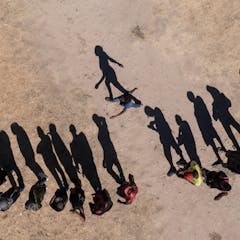
Articles on Fire
Displaying 21 - 40 of 192 articles

Climate change promotes ideal conditions for catastrophic fires, but the most drastic changes can still be avoided.

Peatlands safely store hundreds to thousands of years’ worth of humanity’s toxic legacy but climate change and physical disturbances are putting these pollution vaults, and us, at risk.

If the spring fire season in Canada is any indication, fire-loving pyrophilic insects will continue to thrive well into summer.

When the rainforests burned, the leaf litter did too – and with it, billions of invertebrates vital to healthy ecosystems.

A fire killed 38 migrants in a Mexico detention facility in March 2023. A sociologist’s conversations with migrants show that they had a common response to this news – a deep sense of grief.

Research highlights at least six different motivations for perpetrators that commit arson.

Fires in Canada have sent smoke across several US states, leaving cities including New York, Chicago and Denver with some of the worst air quality in the world – even far from the flames.

Satellite data and traditional know-how combined have drastically reduced fires across northern Australia over the past 20 years.

Signs of controlled fire use from Spain are at least 50,000 years older than previous evidence.

Two decades of satellite data have allowed us to map fires across the country and identify areas facing high fire risks. Fire activity has increased in several major regions over the past decade.

Autumn extreme fire weather around Cape Town in South Africa has become 90% more likely in a warmer world.

Over 50 fire ecologists across the Western U.S. took an unprecedented look at how forests in thousands of locations are recovering from fire in a changing climate. The results were alarming.

More homes are burning in wildfires in nearly every Western state. The reason? Humans.

The Canberra fires showed even urban communities can be in danger if close enough to the bush.

Noxious smells and blowing ash initially made the homes unlivable. But even after their homes were cleaned, some residents still reported health effects months later.

The threat of fire and burning as a tool of family violence isn’t routinely assessed and addressed in Australia.

Atmospheric dust storms often follow wildfires and have serious impacts on human health and ecology.

In Nevada, people create a makeshift city toward the end of summer and later burn it down. What’s behind this event, and what makes it meaningful?

Enormous, scaly, fire-breathing dragons have fascinated civilizations for centuries. A scholar who studies monsters explains their power and appeal.

The early symptoms of carbon monoxide poisoning include headaches or dizziness, breathlessness, nausea, tiredness, chest and stomach pains and visual problems.
